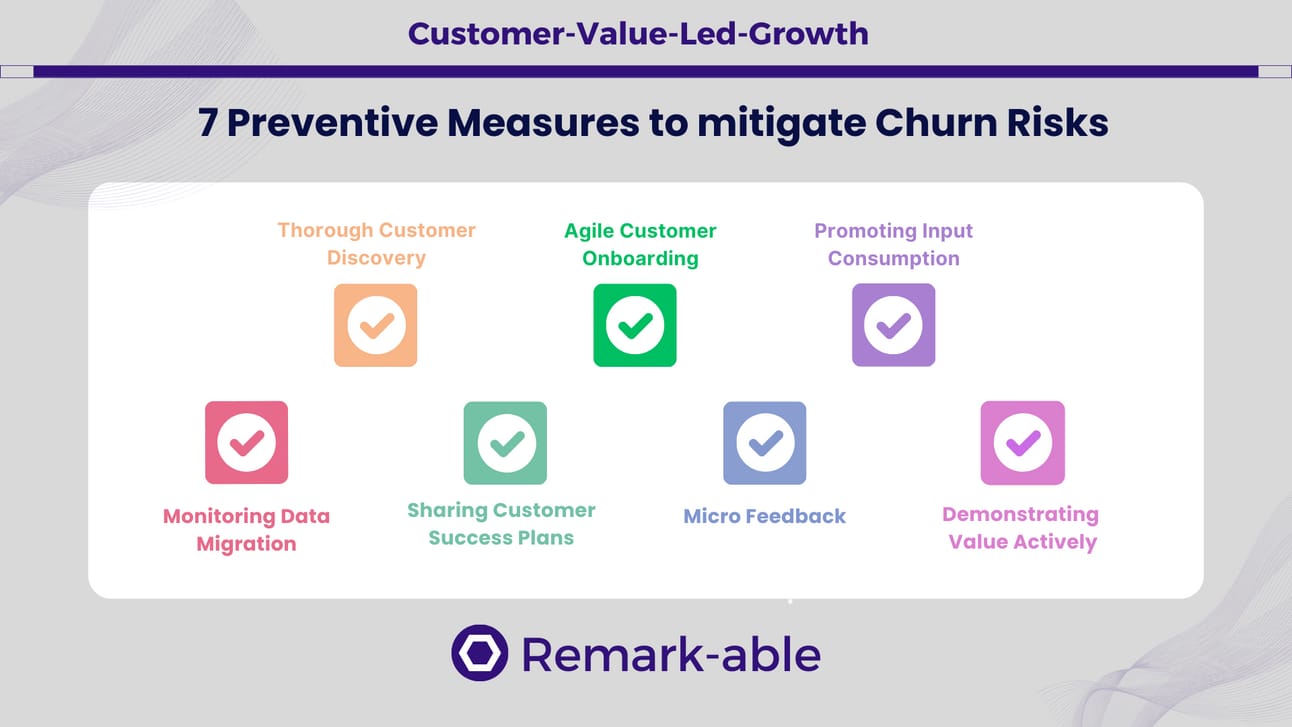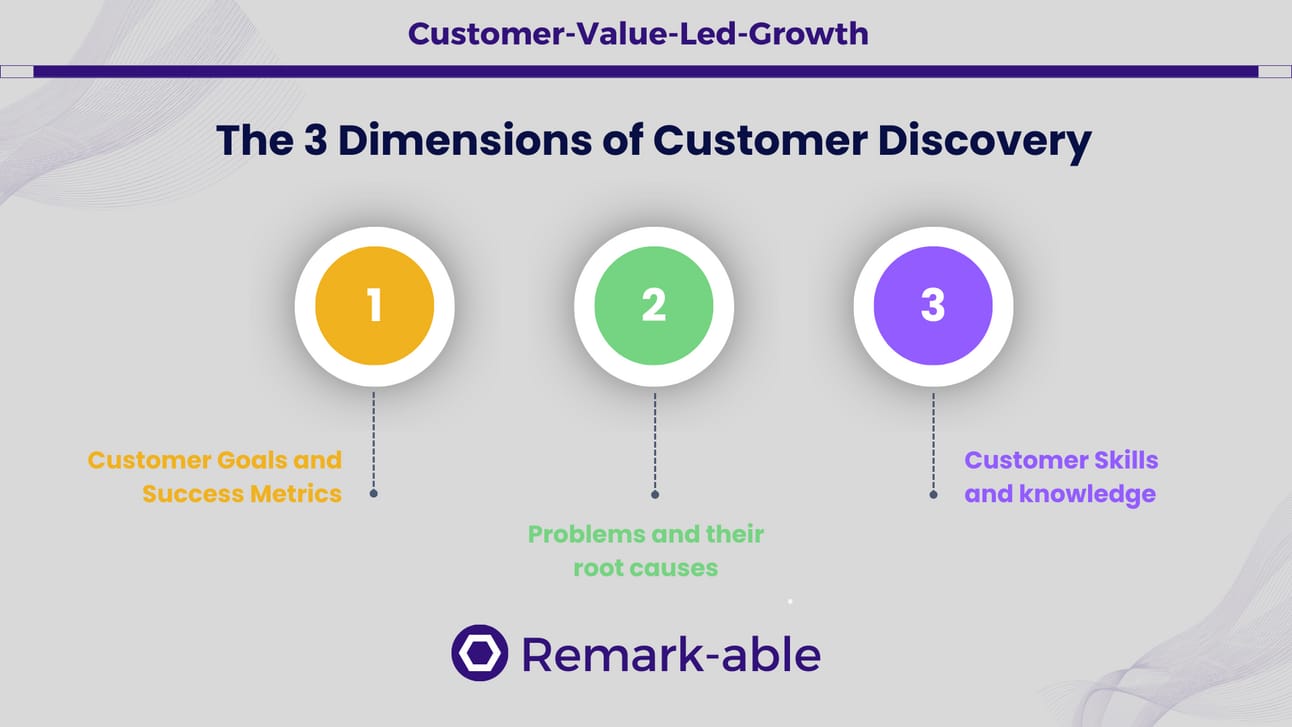Sponsored by


Migrating data is one of the biggest barriers to onboarding customers quickly and successfully. This process is often complex, error-prone, and time-consuming, causing frustration that can negatively impact the customer experience. Don’t let customer data become a bottleneck for your business.
See how we’ve made onboarding and migrating customer data faster than ever at the biggest release in Flatfile history. Join us from October 21st - 24th for a week of personalized consultations, demos, giveaways, and exciting product releases that will empower your implementation team.

Hi, Markus here. Welcome to a new episode of the Customer-Value-Led-Growth Newsletter.
Every week, I share strategies, guides, and frameworks to help you create exceptional value for your customers and company.
If you are not a paid subscriber, here’s what you might have missed:
Consider subscribing to get access to 100+ posts and support my work 👇
In the past decade, CSMs have relied on monitoring
Health Scores
NPS and CSAT
Adoption and usage
to identify potenital churn risks. Life in CSM would be easy if all customers who are at risk would send obvious signals.
In reality churn also happens from customers with green health scores (“Watermelon Effect”). It happens from customers that are literally using your product 24/7/365. Churn you never saw coming.
The most accurate way to identify churn risks is to monitor your customer progress toward their desired outcomes.
Your customers want to grow their revenue by 25% YoY? What are their results after 3,6, and 9 months.
However, there’s one thing that both ways have in common. When you identify those churn risks, the customer might already be beyond saving.
In today’s post, I’ll show you simple actions you can take to mitigate churn risks before they have a chance to manifest.

1. Monitoring Data Migration
Many of your customers are not starting from scratch. They are moving on from documents, spreadsheets, or competitors’ products. So their first step is not jumping into action using your product, it’s migrating their data.
If the process is not fully automated, there are no guarantees that the migration will be complete and error-free (assuming the fully automated process works).
As a CSM you are likely not directly involved in the process but that does not mean you should not care. If the data migration is botched, you are fighting an uphill battle right from the beginning.
Reach out proactively to ensure your customers are properly set up. This is exponentially important when the data migration is supposedly self-
2. Thorough Customer Discovery
I’m talking about this in many of my posts. You may get tired of it but I do because I can’t emphasize its importance enough. Guessing and assuming is an open invitation for failure.
The only time where it’s acceptable is when there’s no information available. For example, when customers, for whatever reason, are not talking to you. Every gap is a risk by default.
A risk that you
guide customers toward the wrong goal
provide a solution for a problem they don’t have
don’t provide a solution for the problem they have
take skills and knowledge for granted they don’t have yet
and waste your customers time until they run out of patience.

You need to work to close every gap in your customer portfolio. That includes overcoming the awkwardness of doing a (re-)discovery with your “legacy” customers. Late is still better than never.
3. Sharing CS Plans
You have done your homework and gathered all relevant information from your customers. But there’s a chance that you might have misunderstood something.
Despite your best efforts, this can happen to anyone. Misunderstanding of relevant information is as bad as not having it in the first place. You risk leading customers in the wrong direction and wasting their money and time.
The solution is to share your CS plans with your customers and get their feedback. You should do it anyway to create clarity and accountability and get their buy-in. So this is just another reason why.
If you ask for their feedback they will (hopefully) go through and detect possible misunderstandings. An alternative is to build the plan together with your customer right from the beginning.
4. Agile Customer Onboarding
Customer onboarding is the first phase of the post-sale customer journey as (hopefully) outlined in your CS plan.
Its purpose is to give your customers quick wins by solving a problem using your product. The goal is to get your customers’ commitment to playing the long game.
When you have have only a short time to delight your customers, say 1 month, you need to think in minutes, hours and days.
Because there’s no room for gaps, undetected mistakes and idling time. The easiest way to prevent those is through splitting complex tasks into smaller pieces.
Following Agile principles we would call those sprints and in customer onboarding they are even shorter. After each one of them you meet with customers get feedback on their progress.
Example: Instead of guiding customers to start an initiative (cold outreach, building roadmap, creating reports, etc) and waiting for their results you split the process into
Data Analysis
Action Planning
Execution
Taking smaller steps are easier to complete and after each one of them you interact with your customer. This way you can identify and deal with said gaps, mistakes and idling times (almost) in real time.
5. Micro Feedback
The purpose of the CSM role is customer enablement. Enabling them to solve their problems through education and training. The quality of content and services is the key.
Where quality does not refer to the perfect grammer or stunning visuals but the percentage of successful implementation.
If you are looking at your education and training program as a whole it’s difficult to measure the effectivness of each part.
This becomes painfully clear when they failed to accomplish their goals when you are not able to pinpoint gaps and shortcomings.
The solution is to gather micro feedback from your customers right after the consumption.
You are running a webinar? Reach out to customers after an appropriate period and ask about the implementation of their learnings. What worked, what did not and why?
If you are following up this way, you can provide additional help right away if things didn’t work out as planned.
6. Promoting Input Consumption
There are no guarantess that your customers will succeed after consuming your content and services.
But if they don’t consume it at all, they will fail by design they don’t have a shot at becoming successful. Assuming that they required those inputs in the first place.
Even though it’s for their own good, customers do not always follow your inputs and recommendations.
It’s not that surprising at all. They don’t want to spend their time studying. They want to jump into action even when they (subconsciously) know it’s bad for them.
Pointing fingers and keep reminding your customers is one way. Actively promoting the benefits of taking the time to create FOMO another one.
Customers who participated in our webinar series saw a 45% increase in X [KPI customers care about] within the first 12 months
It’s not a bulletproof strategy but if you can improve the consumption or completion rate by 30% you’ve already made a big step forward.
7. Demonstrating Value Actively
The previous points were all about risks that result in failing to create customer value. But what if customers get value but for some reason don’t see it?
You must never assume that your customers are aware of how much they benefit from working with you. Even when they are supposed to measure it.
This becomes more evident when you are working with larger customers. The people at the frontline - the users and their manager - should be very much aware of how their results and lives have improved.
But what about other key stakeholders? Executive buyers and sponsors you will never meet that are far away from the action.
Use every opportunity to actively demonstrate value. The more often they hear about it the more likely they will recognize it.
The easiest way to do this is during your QBRs/EBRs as reviewing the value customers got so far has to be a major part of them anyway.
Another way is to create reports for all the stakeholders that are not present. Reports that outline how THEY benefit from your product they never had to ask for.
Did you like this episode? Who else would benefit from reading it?
Here’s how I can be of further help:
CSM Academy: Become 1% better at delivering, growing, and monetizing customer value in less than 5 minutes per day.
Courses and Guides: Get the strategies, tools, and processes to move from reactive CSM to Customer Value-Led Growth.
Services: Keynotes, Workshops, and the full implementation of the Customer Value-Led Growth Framework
Sponsorships: Promote your product, service, content or event to 6.6k+ CS professionals by sponsoring this newsletter
